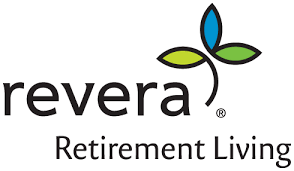Researched and written by 3rd nursing students Maddie Julien and Stephanie Cormier.
The amount of older adults is rapidly growing due to the aging population and the constant increase in life expectancy (Lecovich, 2014). Older adults constitute the fastest-growing demographic in Ontario, with 2.5 million older adults accounting for a larger share of the population than children for the first time in the province’s history (Drummond et al., 2020). Due to the increasing aging population, many older adults who require minimal assistance are prematurely placed in retirement or long-term care homes. However, many older adults prefer to age in place. Social connectedness is an essential aspect of older adults’ life that is often neglected. This neglect can result in social exclusion, reduced well-being, and significant mental and physical health problems (Neves et al., 2019).
Aging in place is a complex term that includes an individual’s home or neighbourhood, social relationships, emotional and psychological dimensions, sense of belonging, values, and beliefs. Simply put, aging in place means “remaining at home, in the community, with some level of independence” (Davey et al., 2004, p.133). However, as many of us know, “home” is not only a physical setting but is also an extension of our sense of self and individualization (Lecovich, 2014). Having control over oneself perseveres dignity. Research indicates that most older adults wish to live independently in their homes for as long as possible. Individuals feel confident, comfortable, and safe in their homes, where they can maintain social connections with their friends and families (Drummond et al., 2020). Perceived control and autonomy are known to be linked to better cognitive aging (Zahodne, 2021). To age in place, older adults require more opportunities for social involvement and participation with significant health benefits (Lecovich, 2014).
Social Isolation
Social isolation can profoundly impact older adults’ ability to age in place (Yang et al., 2016). Loneliness can be experienced at any age but has been found to have the highest prevalence among individuals over 80. Social isolation has been linked to several adverse health outcomes in older adults, such as an increase in the risk of depression, anxiety, cognitive decline, and even mortality.
Unfortunately, depression is the most common mental health concern facing older adults (Sinai Health: Healthy Aging and Geriatrics, 2021). Not only can loneliness lead to depression, but can lead to a lack of interest in activities of daily living and, in turn, a decrease in social interaction and a rise in health problems. This shows social connectedness as a cycle. Strong social relationships allow individuals to maintain independence, enable them to engage in social relationships, and ultimately prevent loneliness (Teater et al., 2020). Depression in older adults can often go unnoticed because it does not always present as traditional sadness (National Institute of Aging, 2021). Due to mental health stigma, older adults may also be less likely to talk about their feelings. Stereotypes paint them as weak or a burden. This stigmatization can further worsen depression as it can cause the individual to feel isolated and worthless (Reissmann et al., 2021).
Older adults who are socially isolated are also at a higher risk of developing chronic diseases like diabetes, hypertension, and heart disease. This is because social isolation can lead to unhealthy behaviours such as poor diet, lack of exercise, and medication nonadherence (Sirey et al., 2013). Older adults may begin to forgo taking their medication for various reasons. However, depression may cause these individuals to simply not care about participating in their essential activities of daily living, manifesting as medication nonadherence (Sirey et al., 2013). Additionally, this can similarly be seen with nutritional status, which is often affected by physical and mental health (Boulos et al., 2016). Social isolation can ultimately lead to older adults neglecting self-care necessities such as medication adherence, consumption of nutritious foods, and physical activity. It is critical to realize that dementia and depression are in no way a part of normal aging and require conscious intervention (Potter et al., 2018).
Social interactions are prominent preventative factors of loneliness and greatly benefit older adults’ cognitive functioning (Kelly et al., 2017; Teater et al., 2020). Loneliness and social isolation are independently associated with poorer physical performance in older age, manifesting as falls, future disability, and loss of independence in activities of daily living (Philip et al., 2020). However, social isolation is preventable with proper support and resources within the community (Mays et al., 2021).
COVID-19
As coronavirus 2019 (COVID-19) began to spread in early 2020, older adults began to experience disproportionately more significant adverse effects. This includes more severe complications, higher mortality, concerns about disruptions to their daily routines and access to care, difficulty adapting to technologies, and concerns that isolation would exacerbate existing mental health conditions (Vahia et al., 2020). A majority of the fears surrounding older adults’ response to COVID-19 are based on the likelihood of loneliness and isolation exacerbation as lockdown measures continue to be implemented (Vahia et al., 2020). The COVID-19 lockdown has been a significant stressor for older adults and has been associated with increased loneliness compared with previous years (Macdonald & Hülür, 2020). Risk factors, such as not having a partner or loss of a partner, limited social network, minimal participation in social activities, poor perceived health, and depression or depressed mood, have been associated with loneliness. Additionally, it has been shown that ageism is an often neglected risk factor for loneliness in older adults (Donizzetti & Capone, 2023).
A study conducted by Bailey et al. (2021) found that almost 40% of older adults included in the study reported that their mental and physical health declined during mandatory COVID-19 social isolation. Additionally, over 57% of participants reported loneliness, and half reported a decline in their quality of life. Findings of anxiety, depression, poor sleep quality, and physical inactivity were evident in older adults, resulting from social isolation during the COVID-19 pandemic (Sepúlveda-Loyola et al., 2020). When older adults are socially isolated, they may not have the support they need to perform daily tasks like grocery shopping, cleaning, and transportation. This can make it difficult for them to live independently and safely in their homes.
Transportation
Social relationships rely on access to social networks to promote engagement in social activities and provide access to social support (Kelly et al., 2017). A comprehensive, coordinated approach to services is essential to combat the fragmentation in care for older adults. An integrated care system is necessary to enable individuals to age in place (Zahodne, 2021). Having to cope with transportation-related barriers to health care has been shown to lead to poorer physical and mental health outcomes. Public and private transportation services often lack the flexibility and accessibility to support many older adults properly. Due to the lack of accessibility, many older adults might hesitate to use public transportation and prefer private services. However, although private transportation services may be more flexible than public, they are often costly, leaving older adults with unmet travel/social needs (Ravensbergen et al., 2022). Private transportation services, when in demand, tend to be pricey, making it unreasonable for older adults to utilize. As transportation for older adults is often inaccessible and expensive, many suffer from the negative consequences of social isolation.
Companies such as Hülpr give older adults a sense of belonging in their communities. Hülpr is an accessible transportation service in the Kingston region that accommodates older adults’ physical and mental well-being. Likewise, Hülpr promotes older adults’ autonomy while prolonging their independence. Hülpr assists older adults with safe non-emergent transportation to and from medical appointments, social activities, essential services (ex., grocery stores), and hospital discharges. Unlike other private transportation services, Hülpr prides itself on ensuring that they build therapeutic relationships with its clients. Creating therapeutic relationships with clients yields a trusting environment, enabling them to feel safe and trust in the care provided. Hülpr clients become friendly with drivers and develop positive social relationships that make a ride feel more like an outing with a loved one. By having companies like Hülpr provide well-rounded, accessible transportation to older adults, the adverse effects of social isolation can be decreased.
Community
Supportive and age-friendly communities that provide ways to increase the ability for older adults to leave their homes and use the physical space of their community are essential to assist with physical and mental health, which in turn may serve as protective factors against loneliness (Teater et al., 2020). Resources such as Oasis (2020) can act as these protective factors. Oasis (2020) is an older adult-driven aging model in naturally occurring retirement communities such as Kingston, London, Quinte West, and Hamilton, Ontario. Oasis communities specifically arise where there are large populations of older adults. These communities are placed in previously established apartments and mobile home parks rather than creating new facilities. In doing this, Oasis allows residents to build a community of support where they live, fostering social connections and self-determination. Oasis uses existing resources and facilities within each city to offer personalized services based on the community’s needs (Oasis, 2020).
Recommendations
A few recommendations for decreasing social isolation among older adults include: creating “mixers” with sister or neighbouring retirement homes, bringing therapy dogs/animals into retirement homes, and collaboration between retirement homes and daycares to create intergenerational interactions. Implementing events that bring together older adults in different retirement homes, such as a mixer, can help expand their social circles by meeting and interacting with people they do not see daily and otherwise may not have met. Providing an event like a mixer could allow them to connect with other older adults with shared experiences.
Incorporating therapy animals a couple times a week into retirement homes can have many benefits for older adults. According to a survey conducted by Ontario SPCA and Humane Society (2021), 76% of respondents agree that human-pet interactions help address and reduce social isolation. Similarly, Ontario SPCA and Humane Society (2021) found that animal-assisted therapy significantly reduced loneliness among residents of long-term care homes. Therapy animals can encourage older adults to spend more time outside and can help improve motor skills as well as range of motion. Animals often make good companions and provide older adults with someone to talk to. Likewise, animals can improve older adults’ self-esteem and encourage social interaction.
The concept of “non-familial intergenerational interactions” revolves around the idea that older adults and young children can bring new energy, knowledge and enthusiasm to each others’ lives. Research shows these intergenerational interactions increase health and well-being and reduce social isolation. These programs are designed to combat loneliness and boredom in retirement and long-term care homes. Socialization across generations has been shown to increase the amount of smiling and conversation among older adults. Research suggests that children who have early contact with older adults are less likely to hold ageist views. These interactions should involve carefully planned exchanges. Activities can range from reading a book to playing games. Finding common interests between the groups could also help foster further beneficial relationships. For example, in New Jersey, an intergeneration orchestra brings together musicians aged between six and 90. Finding older adults with passions such as gardening could also be used to teach the children these life skills (Jansen, 2016).
In conclusion, recognizing the effects of social isolation on older adults’ ability to age in place is essential. Understanding the adverse effects of social isolation can help inform all individuals interacting with older adults to reduce the stigma surrounding their mental health and prevent ageist viewpoints. Implementing and providing accessible services and programs that facilitate social connectedness for older adults can help prevent the cycle of social isolation and allow older adults age in place. We call on all people who interact with older adults in any capacity to take action. Whether this means calling your loved ones to see how they are doing or implementing social connection programs, we can all take part in helping the population of older adults successfully age-in-place.
References
Bailey, L., Ward, M., DiCosimo, A., Baunta, S., Cunningham, C., Romero-Ortuno, R., Kenny, R. A., Purcell, R., Lannon, R., McCarroll, K., Nee, R., Robinson, D., Lavan, A., & Briggs, R. (2021). Physical and mental health of older people while cocooning during the COVID-19 pandemic. QJM: An International Journal of Medicine, 114(9), 648–653. https://doi.org/10.1093/qjmed/hcab015
Boulos, C., Salameh, P., & Barberger-Gateau, P. (2016). Social isolation and risk for malnutrition among older people. Geriatrics & Gerontology International, 17(2), 286–294. https://doi.org/10.1111/ggi.12711
Donizzetti, A. R., & Capone, V. (2023). Ageism and the pandemic: Risk and protective factors of well-being in older people. Geriatrics, 8(1), 14. https://doi.org/10.3390/geriatrics8010014
Donovan, N. J., & Blazer, D. (2020). Social isolation and loneliness in older adults: Review and commentary of a National Academies Report. The American Journal of Geriatric Psychiatry, 28(12), 1233–1244. https://doi.org/10.1016/j.jagp.2020.08.005
Drummond, D., Sinclair, D., & Bergen, R. (2020). Aging Well Report . Queen’s University . https://www.queensu.ca/sps/sites/spswww/files/uploaded_files/GovTalk/2_%20BN_INTRO_2021.pdf
Henning-Smith, C., Worrall, C., Klabunde, M., & Fan, Y. (2020). The role of transportation in addressing social isolation in older adults. National Center for Mobility Management. https://nationalcenterformobilitymanagement.org/resources/the-role-of-transportation-in-addressing-social-isolation-in-older-adults/
Jansen, T. R. (2016, January 20). Combining daycare for children and elderly people benefits all generations. The Conversation. Retrieved from https://www.theatlantic.com/education/archive/2016/01/the-preschool-inside-a-nursing-home/42482/
Kelly, M. E., Duff, H., Kelly, S., McHugh Power, J. E., Brennan, S., Lawlor, B. A., & Loughrey, D. G. (2017). The impact of social activities, social networks, social support and social relationships on the cognitive functioning of Healthy Older Adults: A systematic review. Systematic Reviews, 6(1). https://doi.org/10.1186/s13643-017-0632-2
Lecovich, E. (2014). Aging in place: From theory to practice. Anthropological Notebooks, 20(1), 21–33. http://ojs.westeurope.cloudapp.azure.com/Notebooks/article/view/200/175
Macdonald, B., & Hülür, G. (2020). Well-being and loneliness in Swiss older adults during the COVID-19 pandemic: The Role of Social Relationships. The Gerontologist, 61(2), 240–250. https://doi.org/10.1093/geront/gnaa194
Mays, A. M., Kim, S., Rosales, K., Au, T., & Rosen, S. (2021). The leveraging exercise to age in place (LEAP) study: Engaging older adults in community-based exercise classes to impact loneliness and social isolation. The American Journal of Geriatric Psychiatry, 29(8), 777–788. https://doi.org/10.1016/j.jagp.2020.10.006
National Institute of Aging. (2021). Depression and older adults, https://www.nia.nih.gov/health/depression-and-older-adults
Neves, B. B., Sanders, A., & Kokanovic, R. (2019). “It’s the worst bloody feeling in the world”: Experiences of loneliness and social isolation among older people living in care homes. Journal of Aging Studies, 49, 74-84. https://doi.org/10.1016/j.jaging.2019.100785
Oasis. (2020). About us: Oasis aging: Senior supportive living: Ontario. https://www.oasis-aging-in-place.com/about-us
Ontario SPCA and Humane Society. (2021). How pets benefit the mental health of our aging human population. Ontario SPCA and Humane Society. .
Philip, K. E., Polkey, M. I., Hopkinson, N. S., Steptoe, A., & Fancourt, D. (2020). Social Isolation, loneliness and physical performance in older-adults: Fixed effects analyses of a cohort study. Scientific Reports, 10(1). https://doi.org/10.1038/s41598-020-70483-3
Potter, P. A., Perry, A. G., Stockert, P. A., Hall, A., Astle, B. S., & Duggleby, W. (2018). Canadian Fundamentals of Nursing (6th ed.). Elsevier.
Ravensbergen, L., Van Liefferinge, M., Isabella, J., Merrina, Z., & El-Geneidy, A. (2022). Accessibility by public transport for older adults: A systematic review. Journal of Transport Geography, 103, 103408. https://doi.org/10.1016/j.jtrangeo.2022.103408
Reissmann, M., Geithner, L.., Storms, A., & Woopen, C. (2021). Stereotypes about very old people and perceived societal appreciation in very old age. Zeitschrift Fur Gerontologie Und Geriatrie, 54(2), 93-100. https://doi.org/10.1007/s00391-021-01971-y
Sepúlveda-Loyola, W., Rodríguez-Sánchez, I., Pérez-Rodríguez, P., Ganz, F., Torralba, R., Oliveira, D. V., & Rodríguez-Mañas, L. (2020). Impact of social isolation due to COVID-19 on health in older people: Mental and physical effects and recommendations. The Journal of Nutrition, Health & Aging, 24(9), 938–947. https://doi.org/10.1007/s12603-020-1500-7
Sinai Health: Healthy Ageing and Geriatrics. (2021). Common mental health conditions for older adults, https://sinaigeriatrics.ca/patient-resources/common-mental-health-conditions-for-older-adults/
Sirey, J. A., Greenfield, A., Weinberger, M. I., & Bruce, M. L. (2013). Medication beliefs and self-reported adherence among community-dwelling older adults. Clinical Therapeutics, 35(2), 153–160. https://doi.org/10.1016/j.clinthera.2013.01.001
Teater, B., Chonody, J. M., & Davis, N. (2020). Risk and protective factors of loneliness among older adults: The significance of social isolation and quality and type of contact. Social Work in Public Health, 36(2), 128–141. https://doi.org/10.1080/19371918.2020.1866140
Vahia, I. V., Jeste, D. V., & Reynolds, C. F. (2020). Older adults and the mental health effects of Covid-19. JAMA, 324(22), 2253–2254. https://doi.org/10.1001/jama.2020.21753
Yang, Y. C., Boen, C., Gerken, K., Li, T., Schorpp, K., & Harris, K. M. (2016). Social relationships and physiological determinants of longevity across the human life span. Proceedings of the National Academy of Sciences, 113(3), 578–583. https://doi.org/10.1073/pnas.1511085112
Zahodne, L. B. (2021). Psychosocial protective factors in cognitive aging: A targeted review. Archives of Clinical Neuropsychology, 36(7), 1266–1273. https://doi.org/10.1093/arclin/acab051






























